Faculty and Staff Recollections
From One to a Proud Part of the Family
Conchita Hickey, Ph.D.
Dean Emerita and Senior Lecturer
University College
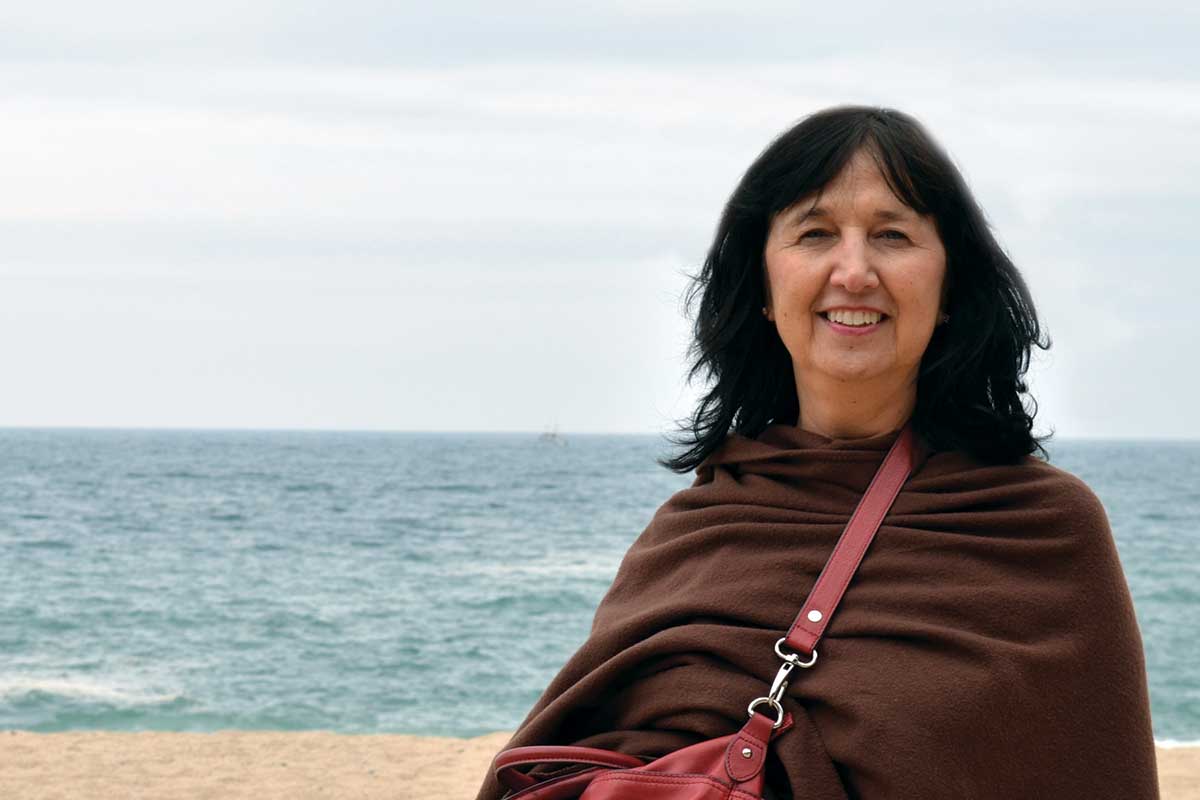
I clearly remember the day I interviewed with Dr. Billy Cowart and Dr. Allen Briggs about a part-time position to pilot an oral and written English tutoring program. It was 1977. I was 28 at the time, married with two children and looking for a job that would allow me sometime to take care of them. I was a one-woman shop for a few years until I got a work study, and then another tutor to help me tutor the juniors and seniors that were transferring in from Laredo Community College. Little did I know that this tutoring program would become my full-time career…and one that would last a span of 42 years.
It is now University College, a division providing academic support for thousands of students through the First Year Experience Program, Reading the Globe, Advising and Mentoring Center, Writing Center, University Learning Center, Developmental Studies, the TRIO program, the Testing Center and the Multi-disciplinary degree program. I could not have imagined then the many opportunities and challenges that came along with that initial appointment.
Over the years, I have witnessed the enormous changes that 50 years have brought, especially the admission of the first freshmen in 1995 on our present TAMIU campus. I recall the enormous energy, dedication and passionate work of the many who were involved in that transition, particularly the President, Dr. Leo Sayavedra, our Provost, Dr. Larry Boyd, and Mr. Joe García, our Vice President for Administration.
A two-year curriculum for freshmen and sophomores had to be developed and approved by the Coordinating Board, many new faculty, particularly in the Arts and Humanities had to be interviewed and hired, the construction of new buildings and our move to new campus had to be supervised, an entirely new catalog developed, and too many other tasks to mention. These men, the deans, department chairs, faculty, and administration and staff worked tirelessly to make this dream a reality. We owe them a debt of gratitude.
I look back now and see that I grew up alongside TAMIU. The admission of freshmen created a new opportunity to develop a much larger and necessary academic support program and I was fortunate enough to have had some experience with this. I will be forever grateful that I was at the right place and the right time and that I was given an opportunity to play a role in TAMIU’s development and to become part of the TAMIU family.
Abriendo Brecha: Forging a Personal Path
Dr. Norma E. Cantú (’73)
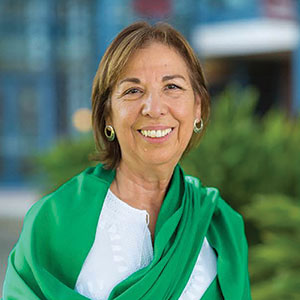
Buenas Tardes. Good afternoon. I begin by acknowledging the spirits of this place that is Texas A&M International University and the spirits of all our ancestors, asking permission from the Coahuiltecan indigenous peoples of this land. Our ancestors. I also acknowledge and thank all who had a hand in making today’s event happen. Rogelio, Gladys, Steve, Everyone--Muchas gracias!
In the short time allotted for my remarks, I would like to share with you my testimonio, what Gloria Anzaldúa would call an autohistoria, a testimonio of my how what happened 50 years ago impacted not just me but thousands of Laredoans, fronterizos, and fronterizas. The impact on our community, yes, but also on me personally. I have to repeat a statistic that I heard at some point that I believe is telling in that it informs the fabric of our educational system in our community and in the region on both sides of the Rio Grande.
In 1965, I graduated from Martin High School and armed with a Rotary Club scholarship for $144, I enrolled at Laredo College—back then it was LCC. I worked in the library that was housed in the old fort chapel—in a way that was my first job in higher education!

1965-1969
But as the oldest of 11 children in a working-class family, I faced a difficult decision when the scholarship ran out. I couldn’t see myself leaving Laredo—financially or morally, it was not an option. So, I got a job as an office clerk at Central Power and Light company. Those years at CP&L taught me invaluable lessons about life, about work, about the sexism and micro-agressions that were par for the course in office culture in the 1960s. I knew I wanted a degree, but by 1969, I had almost given up on my dream, although I had earned over 90 credit hours at Laredo Community College—which by the way had been founded the same year when I was born. There was absolutely no way that I could leave my job, my family depended on it, especially after my brother Florentino was killed in Vietnam in 1968. So, I waited until Texas A&I opened an upper level campus on the same grounds as LCC—in one building, in fact, Laird Hall—Later University Hall would be added and we now had TWO buildings!

1949-1968)
I remember walking in to register that first semester in 1970—the professors were seated at tables in a classroom, and we went around and registered for their classes. Little did I know that I would return only 10 years later to teach English in that very same space. But all of this is preamble, for what I want to do is focus on the people who created this institution, the professors, the administrators, the staff--everyone who worked to build TAMIU. Having lived the history as many of you here today, I have many recollections and memories of the first campus.

I will be focusing on three stages of my association with what is now TAMIU—my undergraduate years at Texas A&I at Laredo; my teaching years at Laredo State University and then TAMIU, interweaving--as is my wont to do in personal essays--some poetry and some recuerdos of people and events.
I met one of the most influential people in my life that first day. It was a tall anglo, a white-haired bespectacled lanky man wearing a white guayabera with a cigarette dangling from his mouth as he spoke. Dr. F. Allen Briggs the English professor who with Drs. Drew Tinsley, Harold M. Kanter, Stanley Green, Rafael Lecuona, Martha Thomas, and others who were not my professors but who played a pivotal role in my education such as Larry Fedigan; his wife Linda was an anthropology student getting her PhD and hired me as a research assistant to observe some monkeys that were housed in a ranch off the Mines Road—indelibly marking my interest in anthropology and in cultural studies. So after my job at CP&L I also spent weekends out in that ranch working for Linda. I also worked on my very first publication, a collection of children’s literature that Drs. Briggs and Alfredo Supervielle were editing, See? Sí!

Also those who were not my professors but likewise exerted an incredible influence in my education included: Drs. The already mentioned, Larry Fedigan and Alfredo Supervielle, as well as Rex Ball, Leon R. De King and Drs. Manuel Pacheco and Leo Sayavedra who would become Presidents of the institution at a later date. Many would later become esteemed colleagues. But I’m getting ahead of myself.
When I graduated in 1973, we had a graduation banquet in Nuevo Laredo. Yes, we were so close we held graduation parties in Nuevo Laredo and when I returned as a faculty member, we often walked across for lunch. We also held summer picnics. I was involved with the Action League of Laredo, Stan was the instigator, as I recall. But I was also involved with Raza Unida politics and did door to door canvassing and voter registration drives. I don’t have many photos of myself during this time as I refused to have my picture taken from around 1964 to 1982 or so.
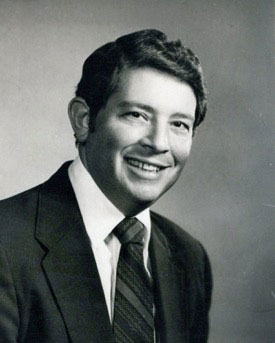
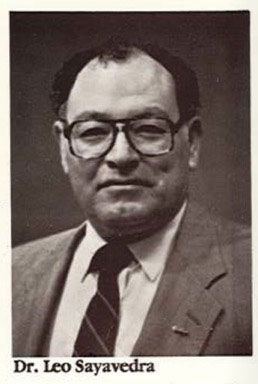
I must confess it was the 70s and our bell bottoms and hippie attire were the norm. I remember getting kicked out of the Yeary Library in the mid-1960s because I was not wearing a skirt. We protested and the dress code changed. We could wear jeans! My friends and I hung out at the Corral, sat outdoors under the mesquite trees when it was not too hot. I worked at CP&L from 8-5 and then went to TAIL from 5 to 10 and then hung out at Denny’s or Quick Bite on San Bernardo; but also after our night classes we drove to the Tumble Inn and had a kind of brisket sandwich dripping with delicious barbecue sauce; it came with thick steak fries. The waiters came out to the car to take our orders. “Cruising” up and down Market Street was all the rage with Serenata Nocturna, the dedication program on KVOZ blaring from the car radio. Luciano Guajardo, a classmate, was the DJ. Some of my classmates were recently returned from Vietnam. Saul Sáenz, Gustavo Villarreal, and others.
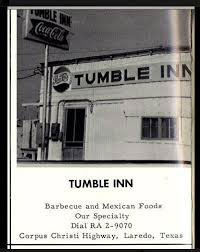
In 1973, I graduated and moved on to the main campus of A&I in Kingsville for my MA. Dr. Orlan Sawey who was Chair of the English Department had come down to Laredo and Dr. Briggs had arranged for me to meet with him. Without realizing it, I was being interviewed! He offered me a teaching assistantship that paid for my tuition and came with a small stipend so I could pay rent and buy food. I moved away, and throughout I remained friends with Stan and Allen.
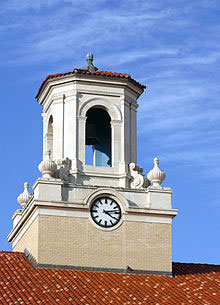
In 1975, I went to Lincoln, Nebraska to work on my PhD. and when I would come home for the holidays or for summer, I reconnected with them. Allen and Marybeth would have me over for dinner; they even honored my vegetarian whims! I now do the same for my students who are off either in law school, or in graduate programs or more frequently as I get older I visit them at the campuses where they are professors. In fact next week, I’ll be in at a SUNY campus in Oswego for a reading.
I was in Spain on my first Fulbright doing research for my dissertation when Leo Sayavedra who was dean at the time called me to offer me the position that Allen was vacating, I felt I had reached a threshold—I was coming home and to work at my alma mater, to give back to the place that had given me so much! So I came back in 1980 to Laredo State University and to a new building, University Hall.
Here begins the second phase of my recollection but now as a faculty member.
On a warm summer day in 1980, Allen packed up the last of his things and drove to Belton, Texas. I stopped by to say goodbye and wish him good luck. I was inheriting his position at LSU and many of his books and files as well. He was a mentor like no other. I have tried to mentor my students following his example. Never pushing or dictating, but listening and supporting. I arrived home from Madrid straight to teaching at LSU.
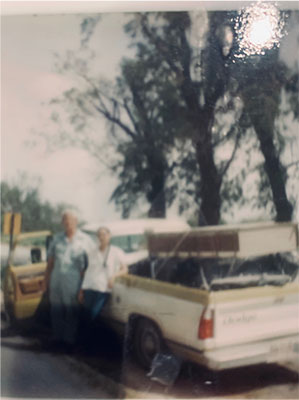
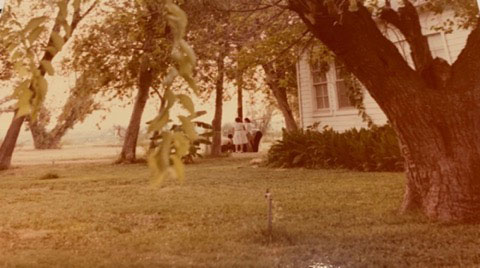
In this photo, Allen is all packed up and ready to drive off to his retirement home—it’s in front of Lem Railsback’s home on campus; it was only a few houses down from where I would end up living a couple of years late. Here is my yard. I wrote many poems and stories in that house. Saw many unforgettable things….like tarantulas—thousands of black giant spiders to my mind-- going down to the river; it was scary! And the Border Patrol raids, herding people into buses. men, women, children. I was blessed to live by the river, and I would often go down to the banks and just enjoy the birds singing and the wind blowing the mesquites and huisaches keeping guard. You can’t do that anymore.
Here is my faculty ID and a picture in my office—good thing you don’t see the reason David Vermilyea was always after me because the fire marshal had declared my office a fire hazard.—I didn’t crop the picture, really!
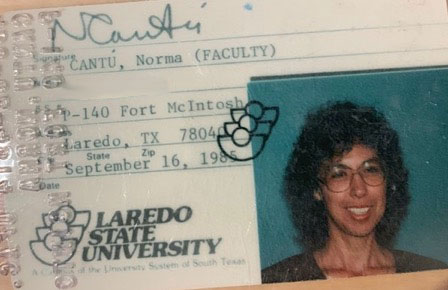
At LSU I was teaching 4 different classes every semester and summers…we all were. I was the one of the 1.5 faculty in English. Dr. Hazelrig was the .5. I taught everything from surveys of American Literature to linguistics, children’s literature, advanced grammar—a course I loved and my students learned to love—or so I hoped for they were going to be bilingual ed teachers and needed that course desperately! in the 1980s, when the state mandated that all teachers be tested, event those who had been teaching for decades, I organized classes in addition to the regular curriculum. among the many activities were fun and social justice groups….at one point I joined the American Association of University Women just so I could belong to something I had not organized!
Among the organizations I helped found were the community based organizations. With Rob Carlson, a librarian at LCC, I started Alternative Films to feed my desire for foreign and indie films. We didn’t have Netflix back then! Our fundraiser was showing the Rocky Horror Picture Show. We also started a women’s group, Las Mujeres in 1982 and for 15 years held an annual women’s conference, Primavera, and a Brindis a la Mujer with the women in Nuevo Laredo.
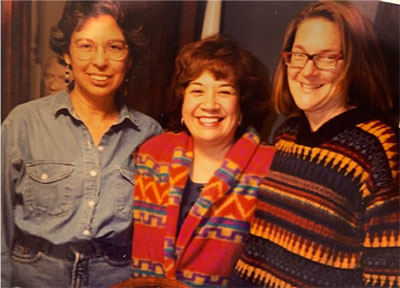
Our archives are in Denton at TWU so I only found this picture of three of us, although we were up to 15 women at any one time organizing our events. In response to the refugee crises we organized a local chapter of Amnesty International and a Refugee Assistance Center. I am disheartened to see that we are still facing similar issues with central American migrants coming through Laredo. My students and I did serious work back then, as I am sure others are doing today.
But, perhaps one of the most rewarding was the establishment of a literacy program. We affiliated with Literacy Volunteers of America in 1982 – originally , the idea came out of a literacy campaign from one of the local TV stations—the NBC affiliate, then Channel 8. The organization survives to this day, now housed at Laredo College. These photos show us back then and now. They need volunteers, so go to their website and sign up to be a volunteer.
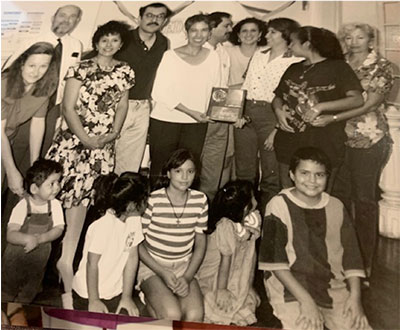
I remember one fall I took my students to the Colonia Guadalupe to test the potential students so we could place them. One octogenarian stood to the side and waited patiently until I was done, and then she came up and said she didn’t really want to take classes, all she wanted was to learn to sign her name before she died. I worked with her and by the end of the evening she could sign her name! We hugged and cried tears of joy. I tell you it has to be one of the most rewarding experiences of my life!
As I used to tell the volunteers you don’t need a degree, all you need is a degree of caring! Joyce McAvoy taught me that one—one of the many volunteers who enriched my life and taught me life lessons.
Also, we hosted national organizations like the meeting of the Mujeres Activas en Letras y Cambio Social, MALCS, in 1992. Elena Poniatowska was our keynote speaker! They keep asking when will they come back to Laredo, for even now, that meeting remains one of the best ones ever. I was acting dean that year and it was incredible amount of work, but well worth it!

I had so much fun with my classes! We had parties at the end of the semester…here are a few pictures…and some pictures of students. There are hundreds but these are the ones I could find!
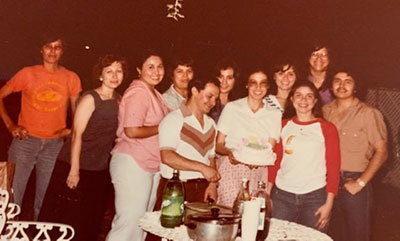

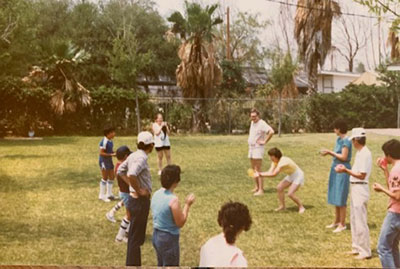



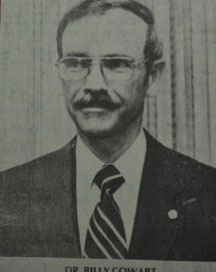


The campus was much smaller and as I mentioned we had parties and picnics all the time. I have some from a summer picnic in the early 80s. Dr. Cowart, The Lecuonas, librarian Mayellen Bresie, and Rex Ball.
We also hosted scholars – I remember one summer in the early 90s, we had two scholars from France, I am still in contact with Annick Treguer. WE also had José Limon teaching another year, and Adela Allen in education.
Here’s a picture of Nina Haydel -- may she rest in peace-- who spent several summers teaching in Laredo.
—I had to put this one in – we collaborated across campuses—here Stan and I are with some folks from Kingsville.
I want to conclude with some images of students from a class, I believe it was in 1986. It is after all why we do what we do—students! Many of my LSU and TAMIU students are on Facebook and we keep in touch; many have gone on to earn PhDs and law degrees and are doing as Anzaldua would say, work that matters. I want to end with that—a reminder to all of you on the faculty, the staff, the librarians, the professors, and yes, the students. Thank you. You are “doing work that matters y vale la pena.”
Gracias!
Award-winning professor and author Dr. Norma E. Cantú is the Murchison Professor in the Humanities at Trinity University in San Antonio and Professor Emerita at the University of Texas, San Antonio. Her latest novel is Cabañuelas (University of New Mexico Press). These remarks were delivered as Guest Speaker at the Sue and Radcliffe Killlam Library’s Faculty-Authored Book (FAB) Collection reception October 2, 2019. Her presentation also incorporated a rich collection of memorable photos, some included herein.
Mrs. Laura Jiménez-Pérez
I was hired just two months after the Planetarium was finished and up and running. I had never seen such a wonderful teaching tool where kids and adults immersed themselves into not just entertainment, but into science education. After being Administrative Assistant for a year, I became Associate Director and my job was public and student outreach. I remember having boards full of ideas, new programs, new shows, and even summer camps that we made into reality and were successful.
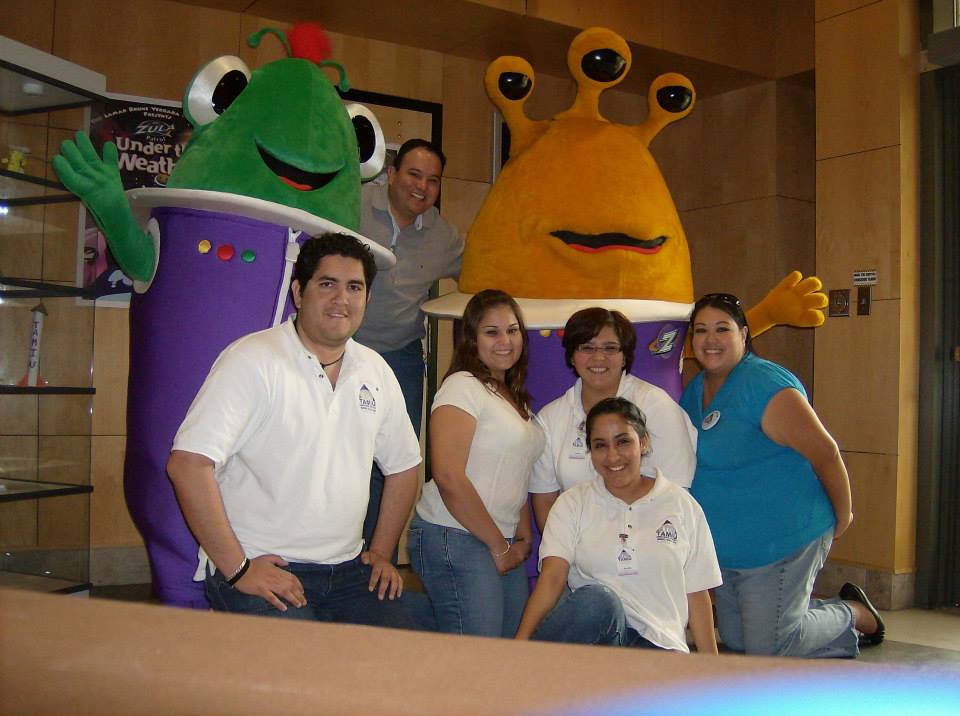
My year would go by so fast since we were planning months ahead of time, like our holiday program in the middle of summer. I would attend NASA's Science Educators Conference to bring STEM activities and align with our shows for our young students from both school districts and surrounding areas.
We launched rockets, made solar system models, Lego robots, and even erupting volcanoes. We had over 100 Girl Scouts camp out during our Science Campout, earning astronomy and robotic badges. We helped many Cub Scouts and Boy Scouts with astronomy badges, and held stargazing nights and environmental events. I was proud of the work I did and it was amazing to be part of a great Planetarium team for eight years.
I remember at my last summer camp we held, a young student came to me and told me he wanted to be an astronaut when he grew up. That was so rewarding to hear, I felt proud of my work and to be part of a great institution that made this available for the community.
Graduates’ Stories are the University’s Story
Mary Treviño, BA ’72
“My initial goal was to teach mathematics at the secondary level. I did that in the Valley and found that teaching occurred both in and out of the classroom. I enjoyed working with students. When I returned as administrative assistant in Admissions, I was still working with students, this time at the University level. I found it quite rewarding to help others reach their goals. Recognizing potential in student workers was also a thrill. Seeing them mature into self- confident graduates was heartwarming.
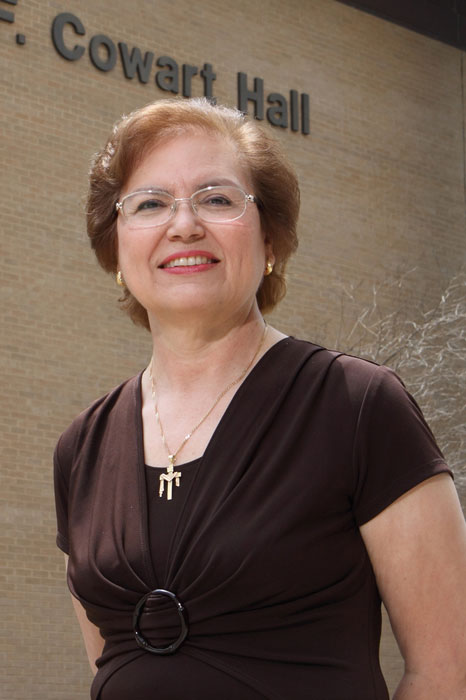
“I remember working with Dr. Cowart out of a study room in the Yeary Library. We worked on a needs assessment and he wrote community members asking for their support. For some reason he thought I knew shorthand and he would begin dictating quite fast. I had to create my own shorthand until Linda Beverly, his first secretary, was hired. Linda taught me lots of tricks of the trade… such as how to make invisible corrections on a document using Liquid Paper. I can still do that.
“I have fond recollections of all my mentors who had high expectations for me. Especially Drs. Billy Cowart, Hal Kanter, Jim Bell, Drew Tinsley, Rosa Vida, and Dr. Leo Sayavedra. Dr. Kanter taught me to be pragmatic – and that is how I have made it this far.
“I recall that the first Student Center was a room in one of the old barracks at the College. Students begged for carpet samples for the floor and we created a collage of various colors and fabrics. It wasn’t very professional looking, but it was ours.
“Every day was a challenge, but I guess the biggest challenge was believing I would be getting a college education here at home from such a young faculty. Then there was the inevitable transition from high school and community college to University-level work. It wasn’t memorization – we had to analyze, synthesize, evaluate, and interpret.
“As the first class we knew we had to all swim together or sink. I remember there were a lot of group study sessions – there wasn’t much else to do. Most of us worked, went to class, studied.
“All these years later, the biggest thrill remains seeing students cross the stage to receive their diploma. This is especially true with students who have been away from higher education for years. When they first return, they think it will take them forever to finish. Seeing their faces light up with smiles as they receive their diploma is priceless.
“Students are the reason we are here and every graduation still energizes me for the next term.”
Mary T. Treviño has had a storied career at the University that has spanned over 45 years and touched virtually all aspects of the University’s mission. She still enjoys announcing graduates’ names at each Commencement Exercise and now serves the University as Director of Migrant Programs.
This Recollection first appeared in the Summer 2000 edition of Prism Magazine.
The Impact of a Trailblazing Campus
Dr. Henry Cuellar, MBA-IT ’82
“I recall that when I was considering my graduate program in international trade there was talk of Thunderbird, a school in Arizona and LSU. I thought the LSU program was more focused on the needs of Laredo, and would have better application.
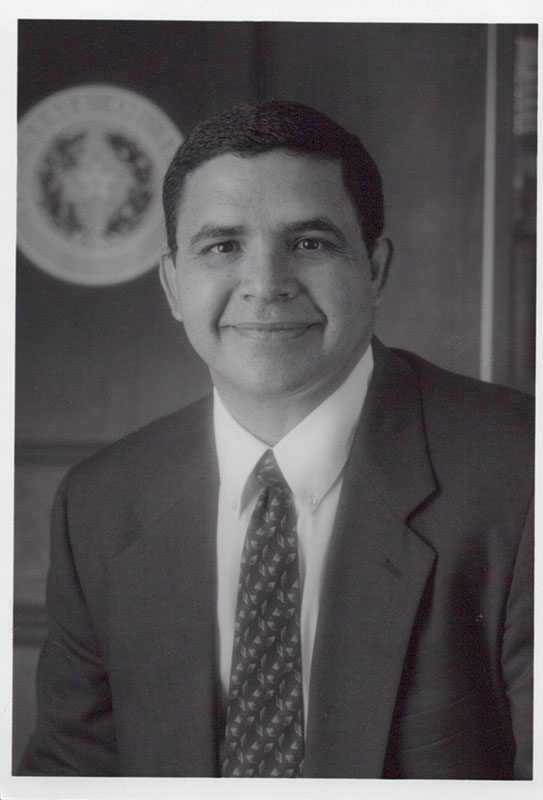
“That real-world application rang true in every class. We’d have the theory, but we’d also have the city as our living laboratory: visiting customs houses, warehouses – talking to people that could offer us their take on what worked and what didn’t.
“It was clear that the University was a pioneer in a field of study that was going to become a major element in the global market. In a way, we students got to share in that pioneer spirit and we clearly relished the challenge of our studies. NOW it’s a buzz word at other campuses, but we need to realize that LSU blazed the first trails that others have followed.
“I remember Dr. Fatemi had a great sense of humor and he was very adept at linking theory to the dynamics of our business community At the time, I was also in Law School and doing a lot of summer school courses, so it was quite challenging.
“The impact of that preparation continues to this day. I’m a better customs broker because of it, but more importantly, I’m a better legislator.
“When it comes to issues of trade and commerce and the border I feel I’m better able to help draft public policy. I’ve found that knowing the field and knowing how it will be impacted makes for informed public policy strategies.”
Henry Cuellar was elected Congressman for the 28th District of Texas in 2004, and has held the office since.
This Recollection first appeared in the Summer 2000 Edition of Prism Magazine.
What Matters Most to Me
Dr. Deborah L. Blackwell
On September 12, 2001, I walked into an unusually somber freshman history class, trying to come up with something appropriate to say about the previous day’s events. Five minutes later, I opened the class with the following remark: “I hope in your lifetime that you never again have a clearer example of how history is happening around you all the time.” I had not really set out to make a point about the importance of history rather than speaking directly about the terrorist attacks. Looking back on it now, however, that comment says a great deal about why I find the study of history to be necessary, compelling, and even life-changing.
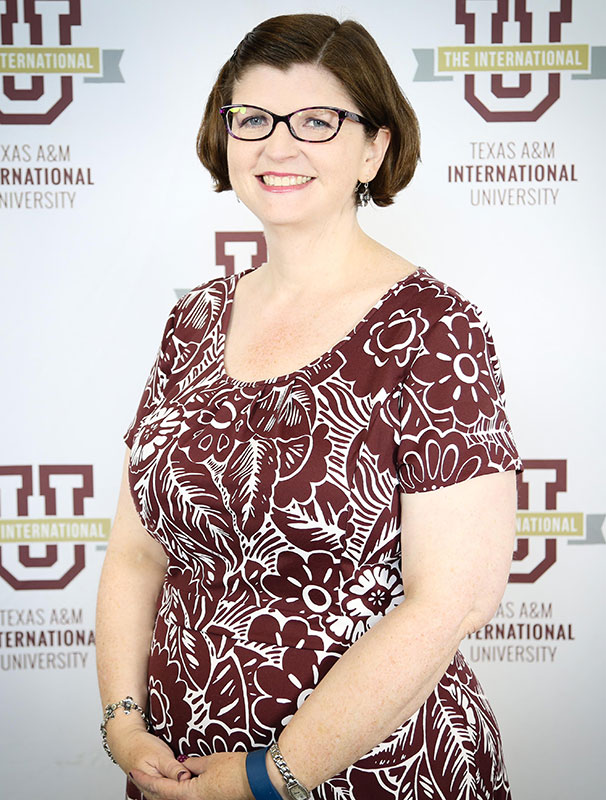
I have been asked numerous times over the years about why I am a history professor by students and strangers whose reactions range from curious to horrified. I welcome the question because it allows me to constantly reaffirm why I chose to make this my life’s work. Actually I barely remember making the choice to become a teacher. My late grandmother loved to regale us with the story of watching me play school-teacher with the neighborhood kids at the ripe old age of four. Though I did consider other careers (at one point I wanted to be an orthodontist), nothing else offered me the emotional and professional satisfaction that teaching promised.
Deciding to prioritize history was another choice that was relatively simple. My first history teacher was my late father, even though for him, history was a hobby rather than a job. I grew up surrounded by his history books, and Daddy had a tremendous gift for explaining the past. I loved the way that everything from world events to the quirks of family members made more sense once I understood their historical context. Good history reveals so much about who we are and why we act as we do in the present, questions with which all humans struggle.
Interestingly enough, my father and I liked distinctly different types of history, which occasionally caused some tension. He loved U.S. and world political history, while I have always preferred social history and its emphasis on the influence of race, class, and gender on American life. Luckily, we were able to agree to disagree on certain subjects, and in fact agreed on many more. Looking back now, I think that history gave both of us the chance to dream bigger dreams for ourselves. Studying the past allowed me to believe that almost anything was possible, even if I chose to follow a non-traditional path for a woman.
History also provides reassurance about the human ability to survive, even under the worst circumstances. I know my students must wonder sometimes if I see anything good in the past, since I am bluntly critical of the racism, sexism, violence, and inequality that are sadly part of the American experience. But far more instructive are the stories that illuminate the resilience of the human spirit in the face of oppression.
For example, the slave Harriet Jacobs responded to her master’s sexual harassment by hiding in a tiny attic for seven years until she was able to escape to the North in 1842. Suffragist Alice Paul responded to her arrest for picketing the White House in 1917 by going on a five-week hunger strike, embarrassing President Woodrow Wilson into endorsing the amendment that gave women the right to vote. As Helen Keller so aptly put it “Although the world is full of suffering, it is also full of the overcoming of it.”
Understanding the relationship between the past and the present, believing in the power of individuals to change the world, knowing that there are all sorts of ways in which people can shape their own realities and triumph over hardship – all of these are gifts that the study of history can give us, if we only pay attention.
In our post-September 11 world, when so much seems uncertain, history offers us the reassurance that even as life changes, we do have the power to move forward as a people and a nation.
--Dr. Deborah L. Blackwell is Associate Professor of History and Director of the University Honors Program at TAMIU.
This Recollection first appeared in the Fall 2002 edition of Prism Magazine.
On Crossroads and Huaraches
Dr. Norma E. Cantú, BA ’73
“I was in Spain on a Fulbright finishing up the research for my dissertation when the call came from Dr. Leo Sayavedra offering me a position at Laredo State University. I hesitated, asked to call him back, stalled for a week or so, not sure that coming home was what I wanted. Why hesitate?
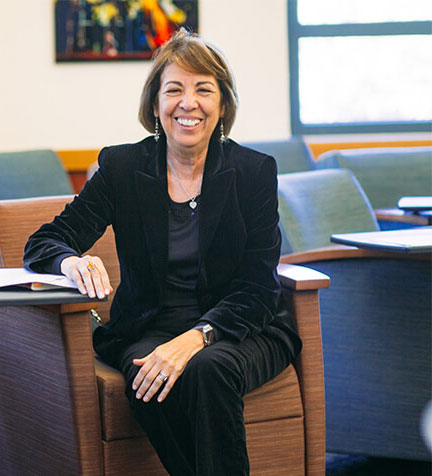
After all, I had left Laredo in 1973 with my brand new BS from Texas A&I University in Laredo with the very same dream: to come back and teach English. But, I had grown away from Laredo, I was a different person; I wasn’t sure I’d fit in anymore, whether my goals for Laredo and what I wanted to do were still there for me.
As I have done each time I have come to crossroads in my life, I prayed and meditated. I remember when I said yes, I had just had lunch with a friend in Madrid and he had tried to convince me it would be a mistake to return. My professors in Nebraska, my Chicano friends and mentors from larger institutions had all advised against coming back.
But, I came. And I have not regretted it one single moment. Coming to teach at the same institution where I received my degree, where my new colleagues had been my professors, was to say the least strange. But it was a coming home that I was ready for.
Those first years, I taught far too many classes, I still do; it was not unusual to teach 12 different (English!) classes a year – and this while writing my dissertation! But, I survived and so did my students.
They got used to my huaraches and my fatigues (of course, now everyone wears them and no one blinks an eye.) But, soon the students and the administration realized I was the same person, only not dressed as I had and not as quiet. I had grown up!
Coming back meant facing challenges I would never face elsewhere, but it also meant I would have the privilege of working along the border, with some of the best faculty anywhere.
It also meant facing challenges most University faculty never even imagine. Have I touched my students? I can only hope that I have in my own humble way done what others did for me.”
Award-winning professor and author Dr. Norma E. Cantú is the Murchison Professor in the Humanities at Trinity University in San Antonio and Professor Emerita at the University of Texas, San Antonio.
This recollection first appeared in the Summer 2000 edition of Prism Magazine.
See a video and reading of Dr. Cantú’s Briscoe Western Art Museum “Destino San Antonio” submission “Family Album” here: https://vimeo.com/314035519
My Fondest Recollection of the University
Dr. Billy F. Cowart
My fondest recollection of the University is associated with memories of successful people.
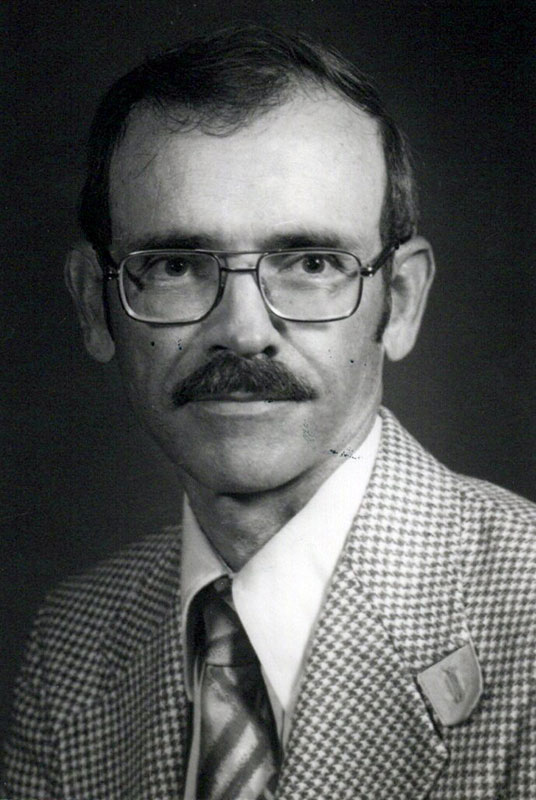
The people of Laredo who successfully pressed the State of Texas to invest in the future of South Texas through the expansion of higher education.
The people who came to the University both as faculty and staff when it represented little more than a dream and successfully exceeded all initial State-level expectations to ensure institutional continuity and to build the integrity of programs and services available to students.
The people who enrolled in a fledgling institutional and successfully completed degree programs, thereby expanding their level of knowledge and experience and contributing in an ever expanding way to the quality of life in South Texas.
My Thoughts on the University Today
It is a little known fact that the University, in 1972 was the first institution of higher education to be accredited by the Southern Association of Schools and Colleges that could not demonstrate ownership of its facilities. Prior to that time, the failure of investment in campus facilities was considered to represent a lack of permanent commitment to students and programs and not worthy of accreditation. The University has successfully overcome those limitations with a magnificent campus setting and physical facilities comparable to any within the State. More importantly, this has been accomplished through a successful combination of public support and private philanthropy.
My Forecast for the Future of the University
Forecasting is always a hazardous business. A weatherperson once told me that if accurate data were available from approximately every 50 miles of the Earth’s surface that it would be possible to successfully predict the weather. Satellite tracking has helped to provide some of that information, but the true issue is the contextual nature of life, and the lack of knowledge and understanding regarding the cause and effect relationship between the forces of nature, people and events.
Life and successful University administration is often a matter of reading the ‘leaves’ …without all of the data that you would like to have or understand. It remains important to me, however, that the University is established in an area of critical need with an important mission to reveal, celebrate and expand the cultural and human capital of South Texas.
The issue is to discover and produce that combination of faculty, students and programs which united with the current level of public and private support being experienced by the University, will produce the truly literate and enlightened citizen essential to the success of any democratic society. In my mind there could be no more important, more demanding or more compelling challenge.
Dr. Billy F. Cowart was the University’s first President, serving from 1969 – 1984.
This recollection first appeared in the Spring 2001 issue of Prism Magazine.
30 Years and Growing “Dreams to Reality”
Dr. J. Charles Jennett
In the span of 30 years, life and living changes. Wars are fought and won, surrendered and lost. The lines that divide our world blur and are redrawn. Science cures ills and finds new ones. A mouse moves from pesky rodent to the preferred tool of entry into cyberspace.
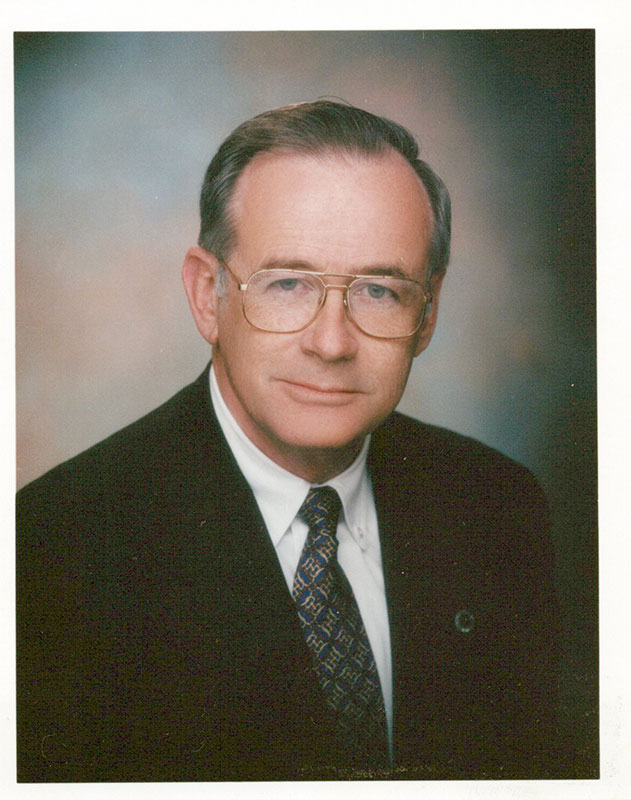
Generations are born and bear new generations. Individual dreams take on global implications. Amidst all the change, only one time continues to bind us: a sense of community.
Thirty years ago, a study carrel in the then-Laredo Junior College was the beginning for a small University on the U.S.-México border, Texas A&I University at Laredo. Since then, it has changed our sense of community. It has changed minds. It has drawn us together.
We all rallied for higher education. Our vision and energies were shared by the State Legislature and supporters of all ages and experiences, particularly Senator Judith Zaffirini and Representatives Henry Cuellar and Tracy King. They saw it as a chance to start a dream, a time to tap into the power of hope.
In 30 years, we have grown. We’ve changed names, changed Systems and changed futures. What started as a ripple in a small pond has become a tide of change in a global community. Those ripples now take us around the corner and around the world.
We’ve gone from the quiet grounds of the West End of Washington Street to the bustle of carving out a new campus from 300 acres of ranchland in North Laredo.
Along the way, we’ve helped over 8,200 graduates to take their place in the global marketplace. Some lead classrooms, some lead boardrooms, some practice in emergency rooms. No matter which campus or name they graduated under, all have made their mark, bettering their lives and that of those they love.
Rest assured, over 30 years, this University has seen its share of challenges and its triumphs, yet at each challenge, our community has come together to commit to a shared vision of a brighter future through higher education.
We can’t begin to name all our partners, for your numbers are legion, but we thank you for your partnership and encourage you to stay tuned as many more great things are about to happen...
J. Charles Jennett, Ph.D., P.E.
Dr. J. Charles Jennett served as TAMIU President from 1996-2001.
This Recollection first appeared in the Summer 2000 edition of Prism Magazine.
A University’s Steps Into The Future
Lupita (Mosqueda) Calvillo
Associate Registrar Lupita Mosqueda knows many of these stories. She has missed only one Commencement since the first Commencement Exercises in 1972.
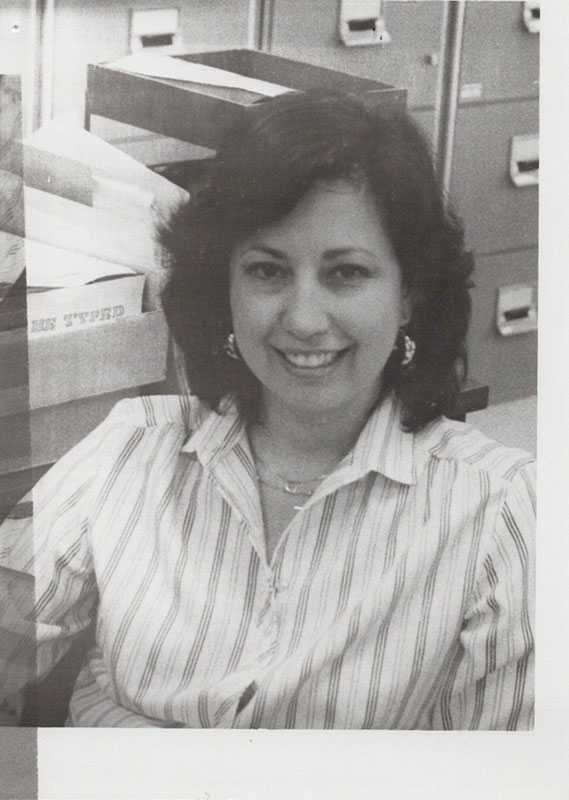
“That first Commencement was planned by the President’s office so I felt the same thrill over the ceremony as did the audience. It was all so new. Over the years, the ceremony changed and so did my role in it. Mainly I remember helping the students dress in their regalia. We always had pins ready to fix an errant gown or cap. The caps were always a problem. They are supposed to be worn on top of the head, parallel to the ground, but some young ladies pinned their caps on the back of their heads, almost straight up. I don’t know how some stayed on. Some of those caps seemed to defy gravity,” she said, chuckling as she recalled those faded memories.
Lupita (Mosqueda) Calvillo was one of the most familiar faces at the University from 1970-2011. She was often the last University staff member to check graduates’ cap and gown before they crossed the stage. She’d review each candidate for graduation with an analytic eye, quickly making any last-minute adjustments to the cap/hood/stole position… and then she’d be on to the next graduate. Many a University graduate owes their picture-perfect finish to Lupita’s vigilance!
This Recollection first appeared in the Spring 2001 edition of Prism Magazine.
